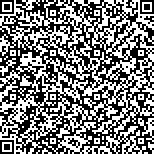| 摘要: |
| 采用cox1基因特异扩增测序的方法, 分析了胶州湾45种常见海洋动物的DNA条形码序列82条, 联合GenBank中28条cox1序列的分析结果表明: 种内个体间遗传差异均值为0.013 (0—0.11); 属内不同种间遗传差异均值为 0.265 (0.137—0.369), 是种内遗传差异的 20 多倍, 条形码间隙明显。在分子系统树中, 所有种类的不同个体都聚成一个单系枝; cox1 序列遗传差异在科、 属水平发生重叠, 无法准确解析上述分类阶元的系统发育关系; 但在更高分类阶元, cox1 序列具有一定程度的解析能力。利用 DNA 条形码, 本研究订正了中国近海多个桡足类的命名。以上结果表明, 线粒体 cox1 基因可以作为 DNA 条形码实现浮游动物的准确鉴定。 |
| 关键词: 胶州湾, 浮游动物, cox1 基因, DNA 条形码 |
| DOI:10.11693/hyhz201105011011 |
| 分类号: |
| 基金项目:国家海洋局海洋公益性行业科研专项, 200805042 号; 国家重点基础研究发展计划(973)项目, 2011CB403601号; 国家自然科学基金项目, 40821004 号; 中国科学院方向群项目, KZCX2-YW-Q07-05 号; 中国科学院对外合作重点项目, GJHZ200808 号 |
附件 |
|
| DNA BARCODING OF ZOOPLANKTON IN THE JIAOZHOU BAY FOR SPECIES IDENTIFICATION |
|
WANG Min-Xiao1, CHENG Fang-Ping1,2, LI Chao-Lun1, SUN Song1
|
|
1.Key Laboratory of Marine Ecology and Environmental Sciences, Jiaozhou Bay Marine Ecosystem Research Station, Institute of Oceanology, Chinese Academy of Sciences;2.Graduate University of Chinese Academy of Sciences
|
| Abstract: |
| Estimation of zooplankton diversity and distribution is important for understanding local marine ecosystem conditions, and may serve as sensitive indicators for climate-induced changes. The scarcity of taxonomists and subtle morphological variations in some groups pose a problem for the identification of zooplanktons, especially at their larval stages. DNA barcodes provide an alternative approach to accurate identification of zooplankton species. The efficiency of the mitochondrial cox1 fragments for species reorganization in zooplanktons was evaluated in this study. The samples were collected from the Jiaozhou Bay and a station in the South Yellow Sea. 82 DNA barcodes were determined for 45 common species that belonged to six different phyla in the local region, including: Arthropoda, Chaetognatha, Chordata, Cnidaria, Echinodermata, and Mollusca. According to the saturation plot, the cox1 gene was substitutionally saturated for the alignment, which was best illustrated by the wobble codons of the gene. The wobble codons quickly got saturated at around 0.2 substitution per site. K2P genetic distances between individuals within the same species ranged from 0 to 0.11, with an average of 0.013 (SE = 0.003); meanwhile, genetic distance between species within the same genera ranged from 0.137 to 0.369, with an average of 0.265 (SE = 0.002). Thus the genetic distance between species was at least 20 times larger that of the within species, indicating a barcode gap, which ensured that cox1 sequences can be used as reliable characters for species identification for the zooplankton assemblages. However, species with extremely large intraspecific divergences were still noticed in our study, which may be explained by population genetic divergence owing to ecological or geographical isolation, unidentified cryptic speciation, and mis-identification. The significant barcode gap and the long-branch isolated shallow tips topology for the Sagitta bedoti suggested a possible cryptic speciation for the species. According to the Bayesian and neighbor-joining trees, the monophyly of all the species was resolved, with the node confidence support value of 1. However, the genetic divergence at the level of genera and family overlapped, possibly owing to the substitutional saturation. The lack of gap precluded the utility of cox1 sequence as the only molecular markers for phylogenetic issues at above levels. At higher taxonomic levels, cox1 sequences exhibited some resolving power by clustering the species within the lineage for some groups, including Copepoda, Scyphozoa, and Chaetognatha. In addition, DNA barcodes allowed recognition of cryptic species and mis-identified species. Based on the analyses of DNA barcodes, species names of several copepods were revised. Acartia hongi and Acartia omorii were mislabeled as Acartia bifilosa and Acartia clausi in previous reports. Acartia pacifica, which had been considered as one species with an apparent ability to live at a very wide range of salinities, was actually comprised of two different species: Acartia pacifica present at high salinity and Acartia ohtsukai at low salinity. Consequently, DNA barcoding based on cox1 fragments were confirmed to be an appealing tool for zooplankton investigations by identifying specimens during all life stages. A comprehensive DNA barcode database will allow rapid assessment of species diversity and distribution of zooplankton in the Chinese coastal regions. |
| Key words: Jiaozhou Bay, Zooplankton, Cytochrome oxidase subunit 1 (cox1), DNA barcode |
